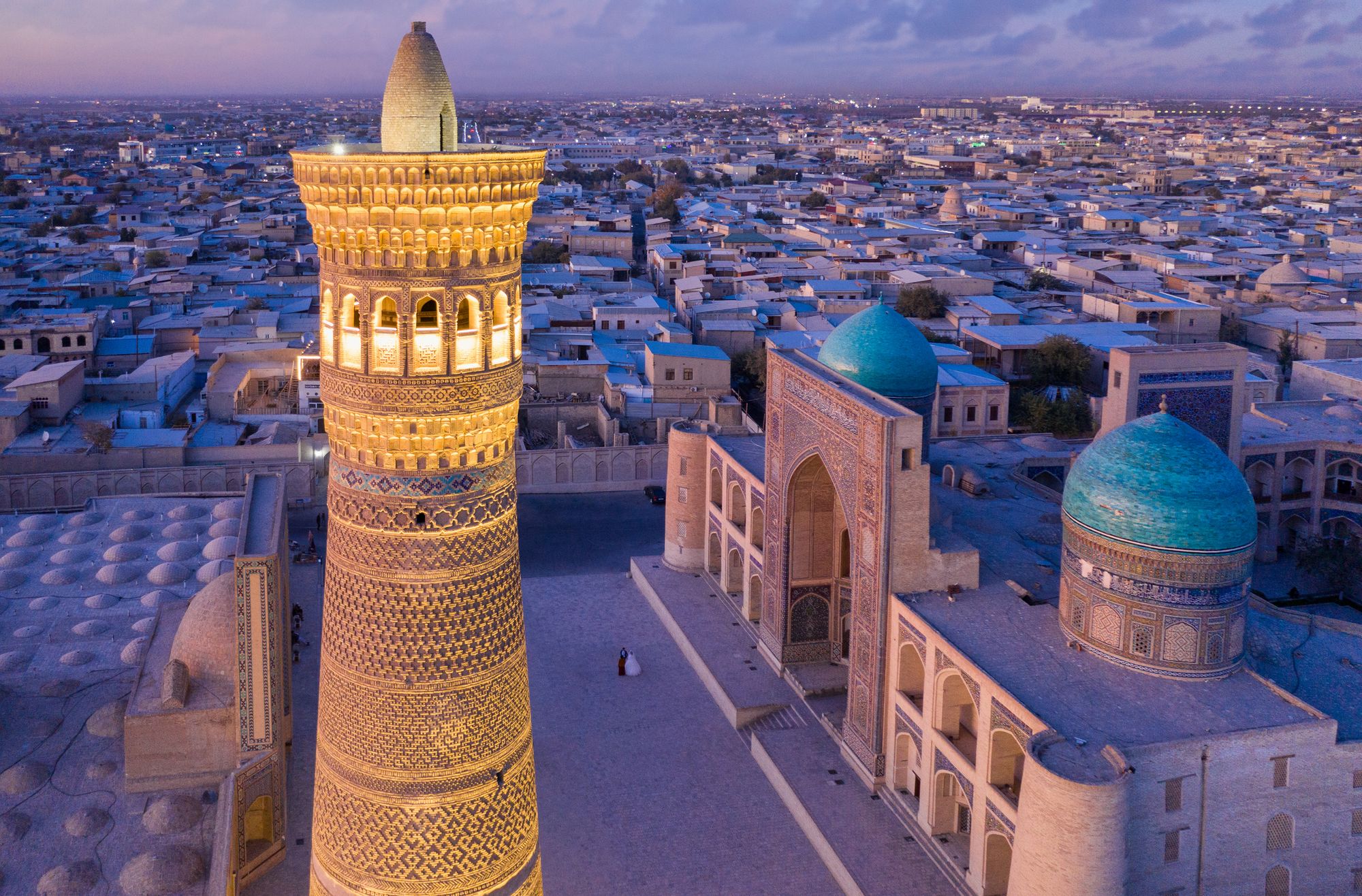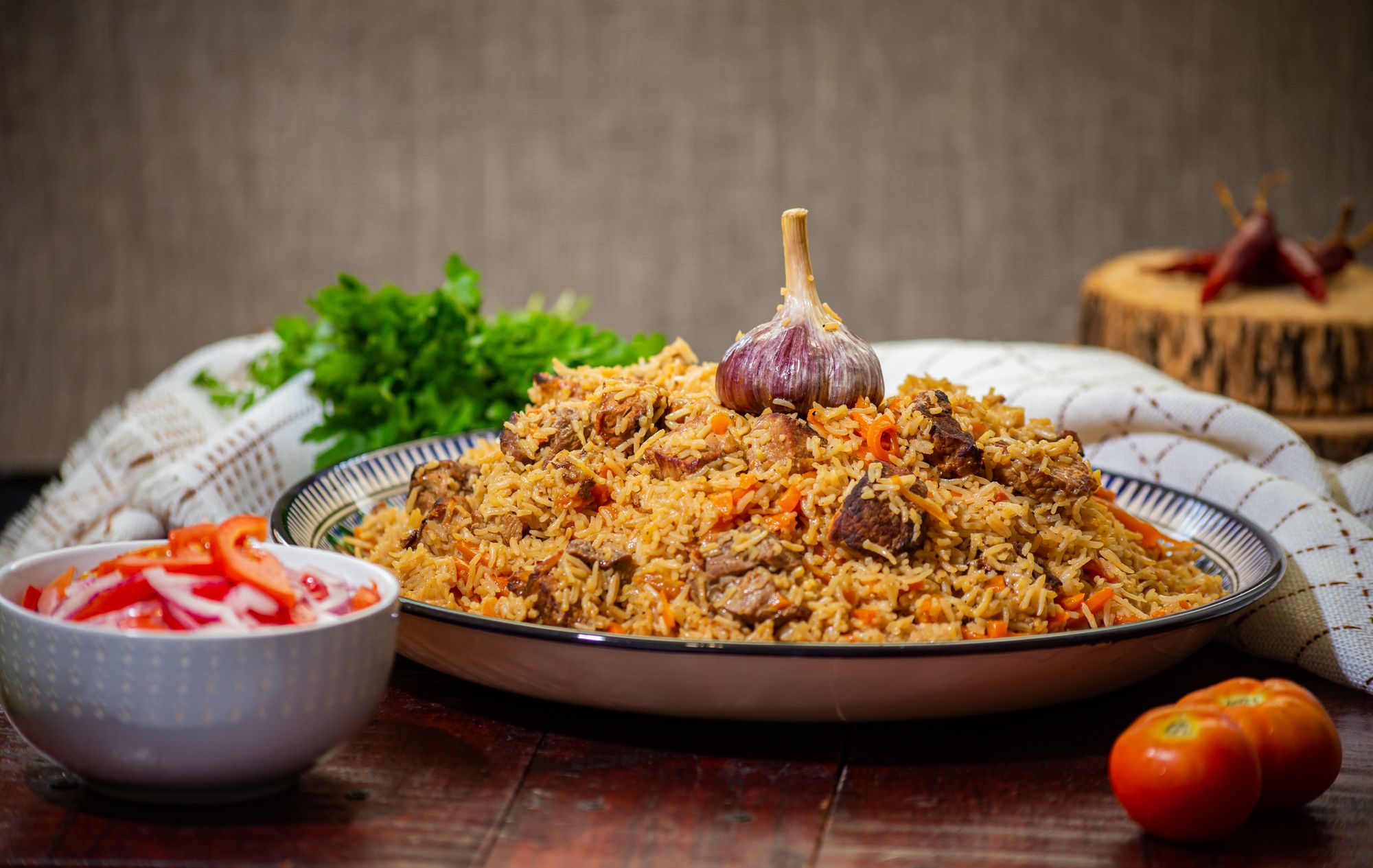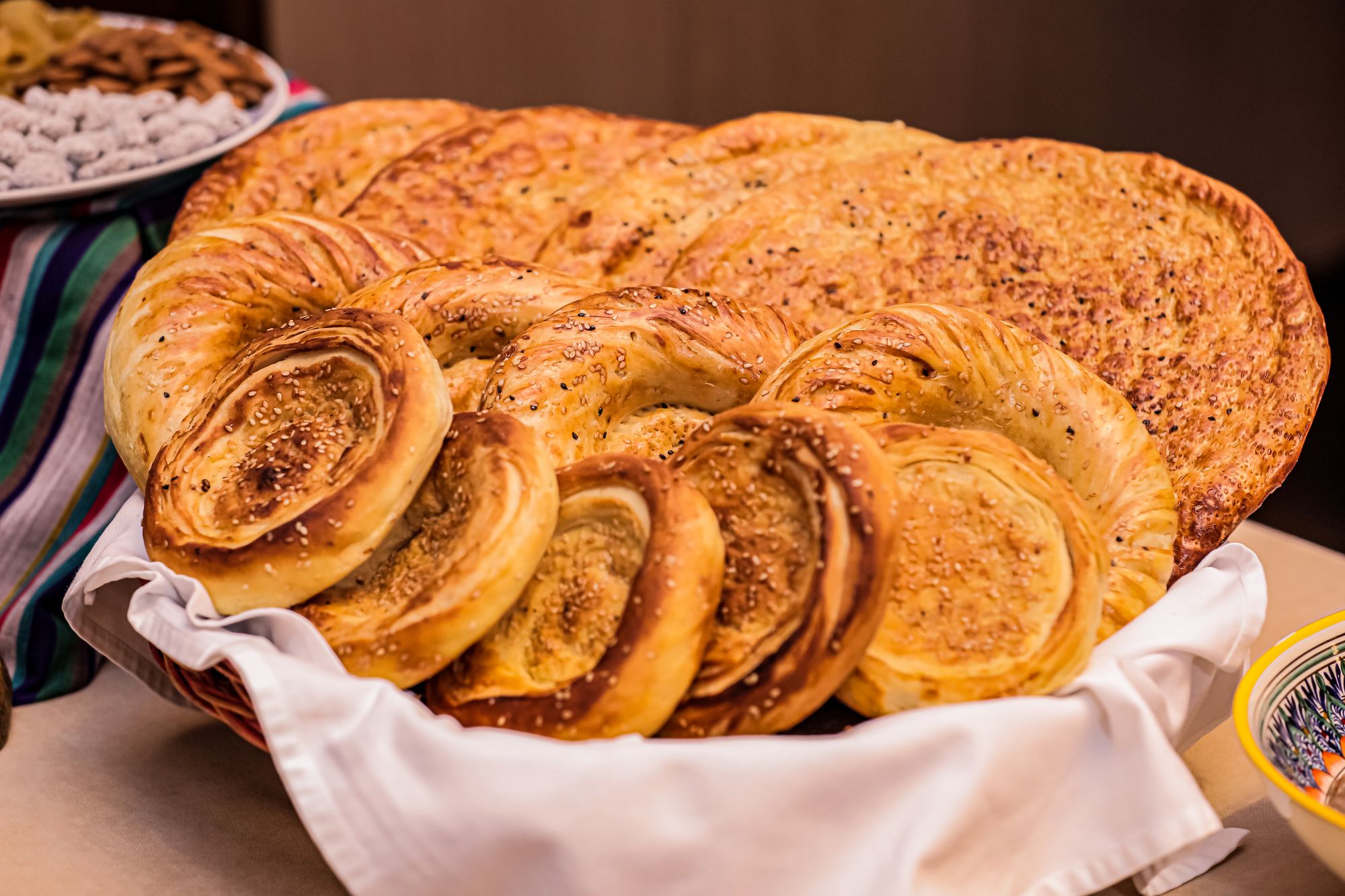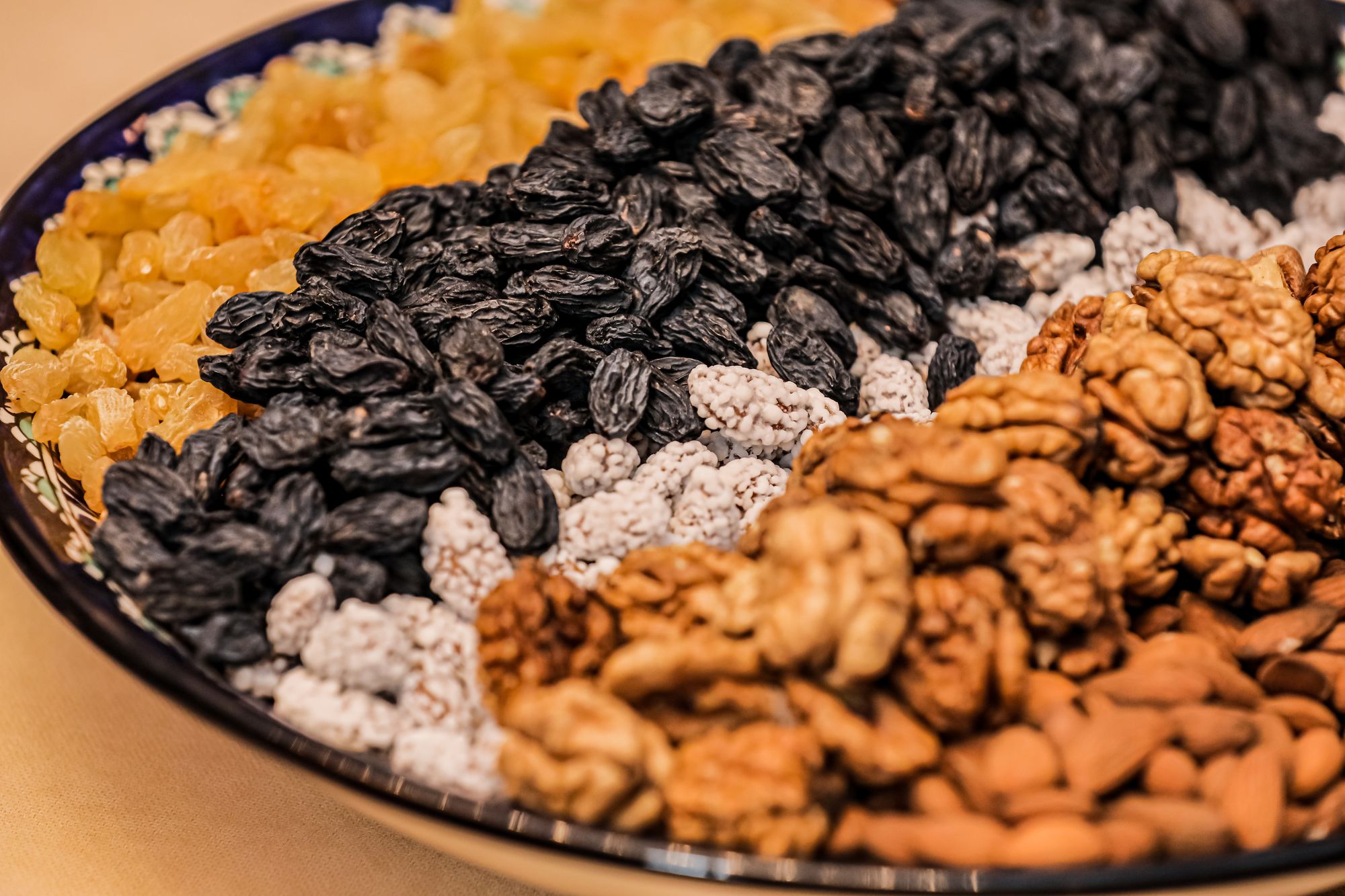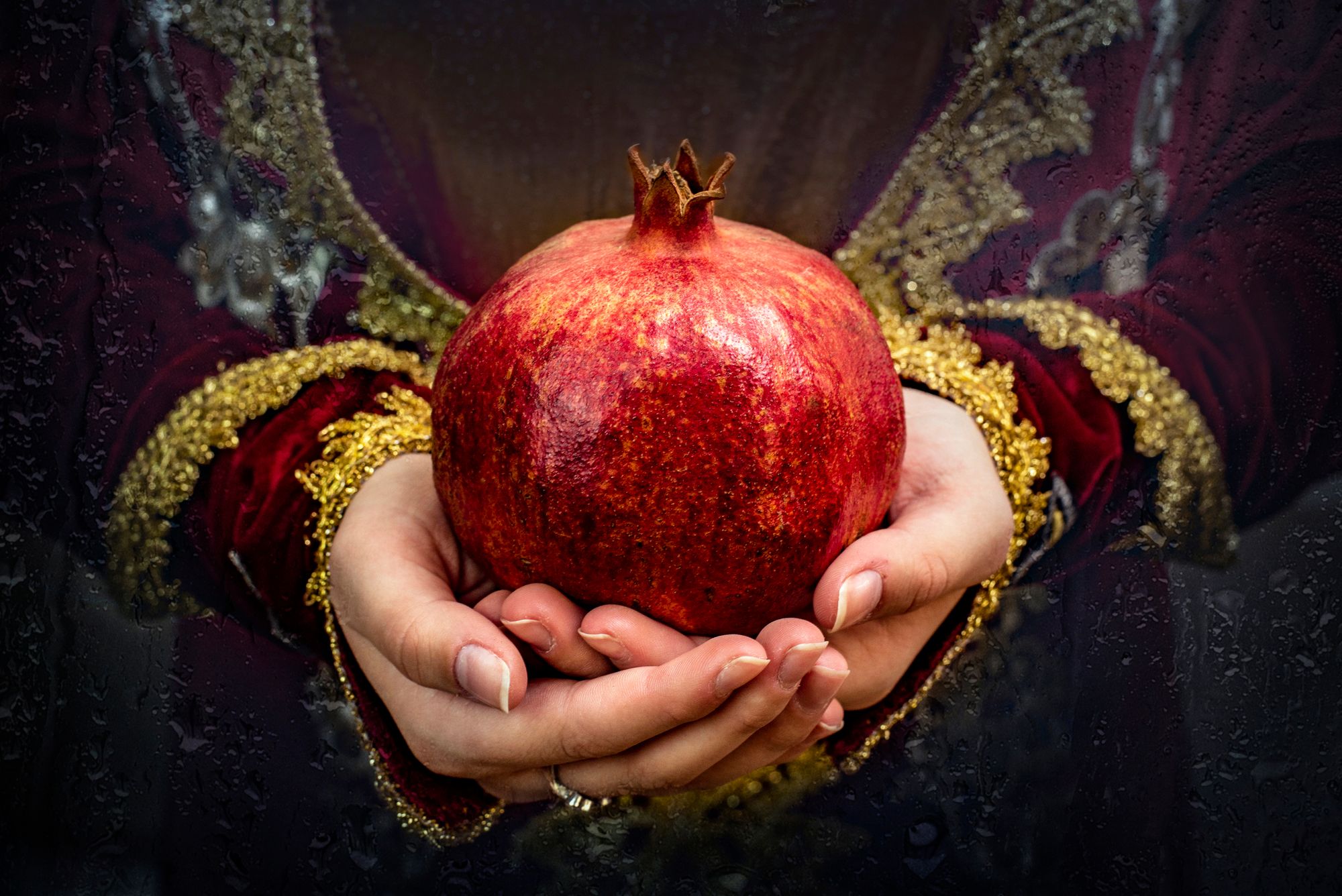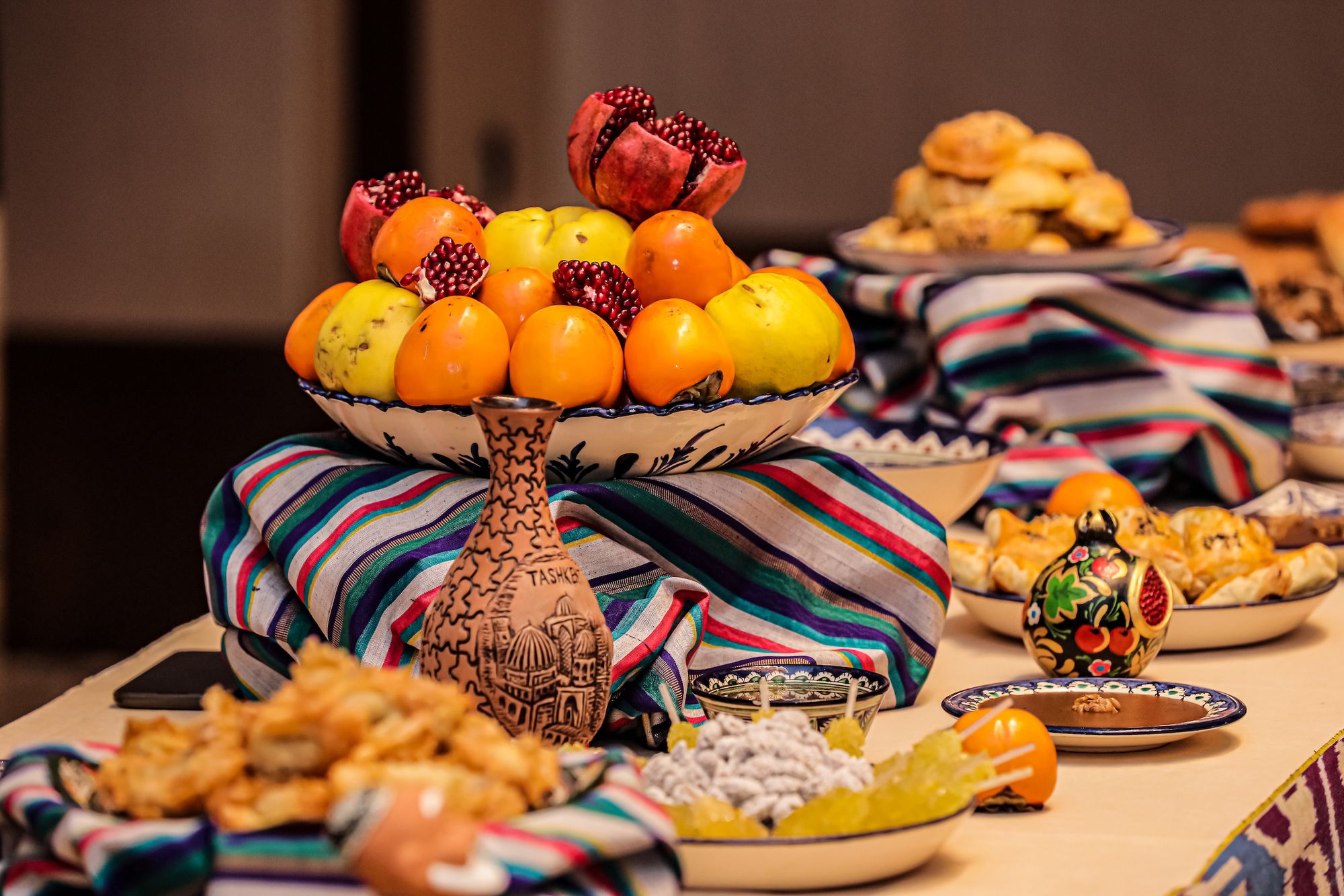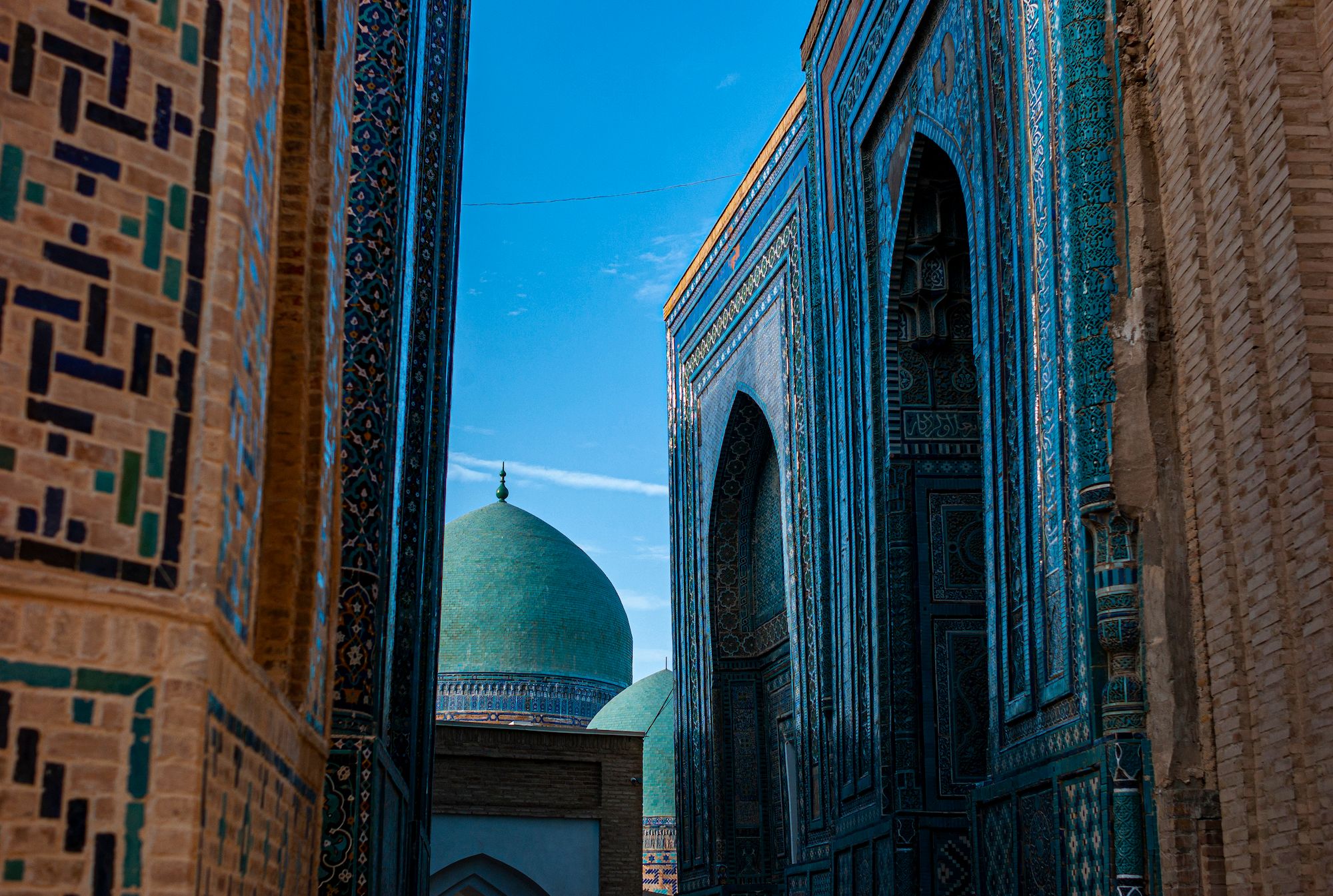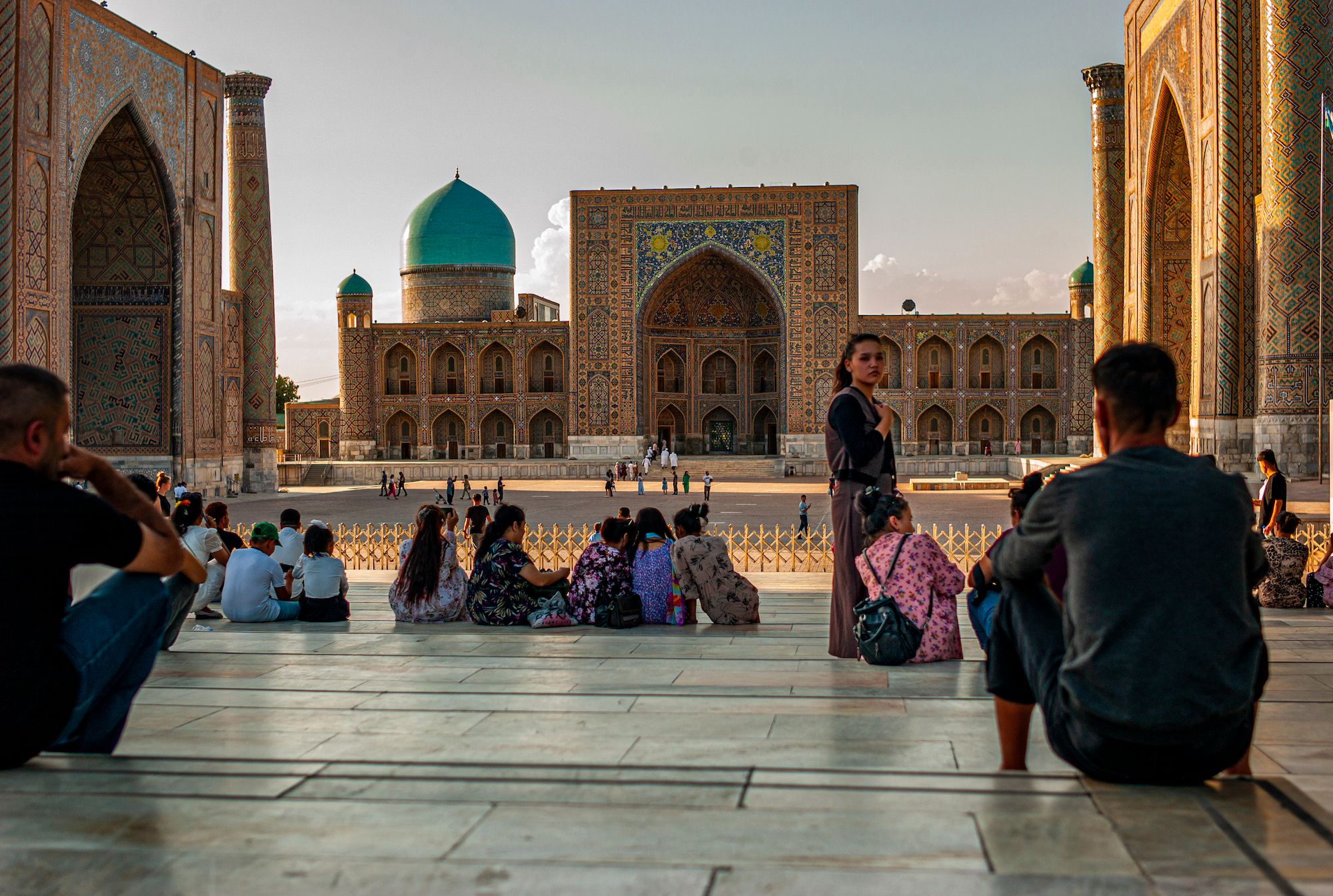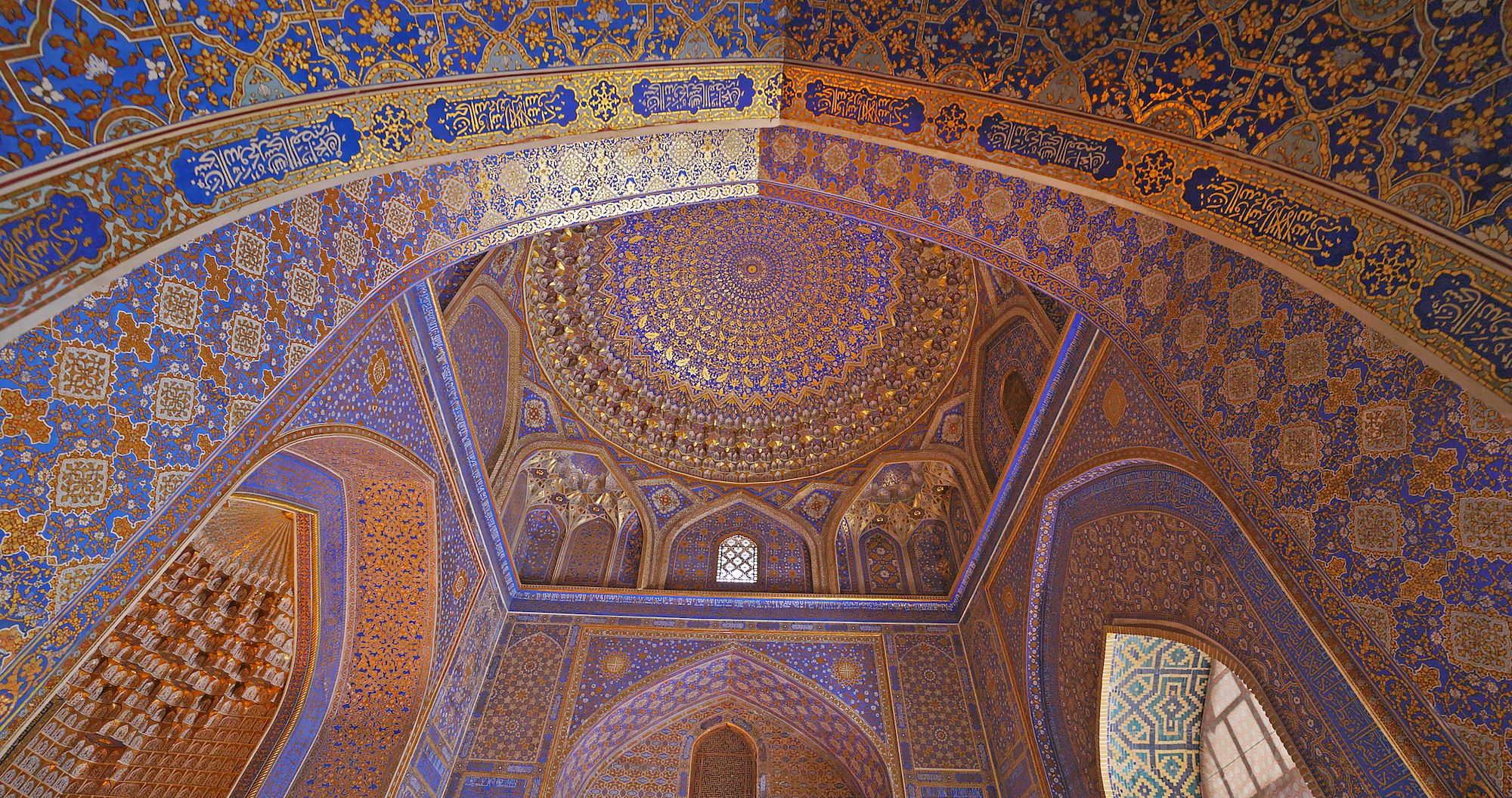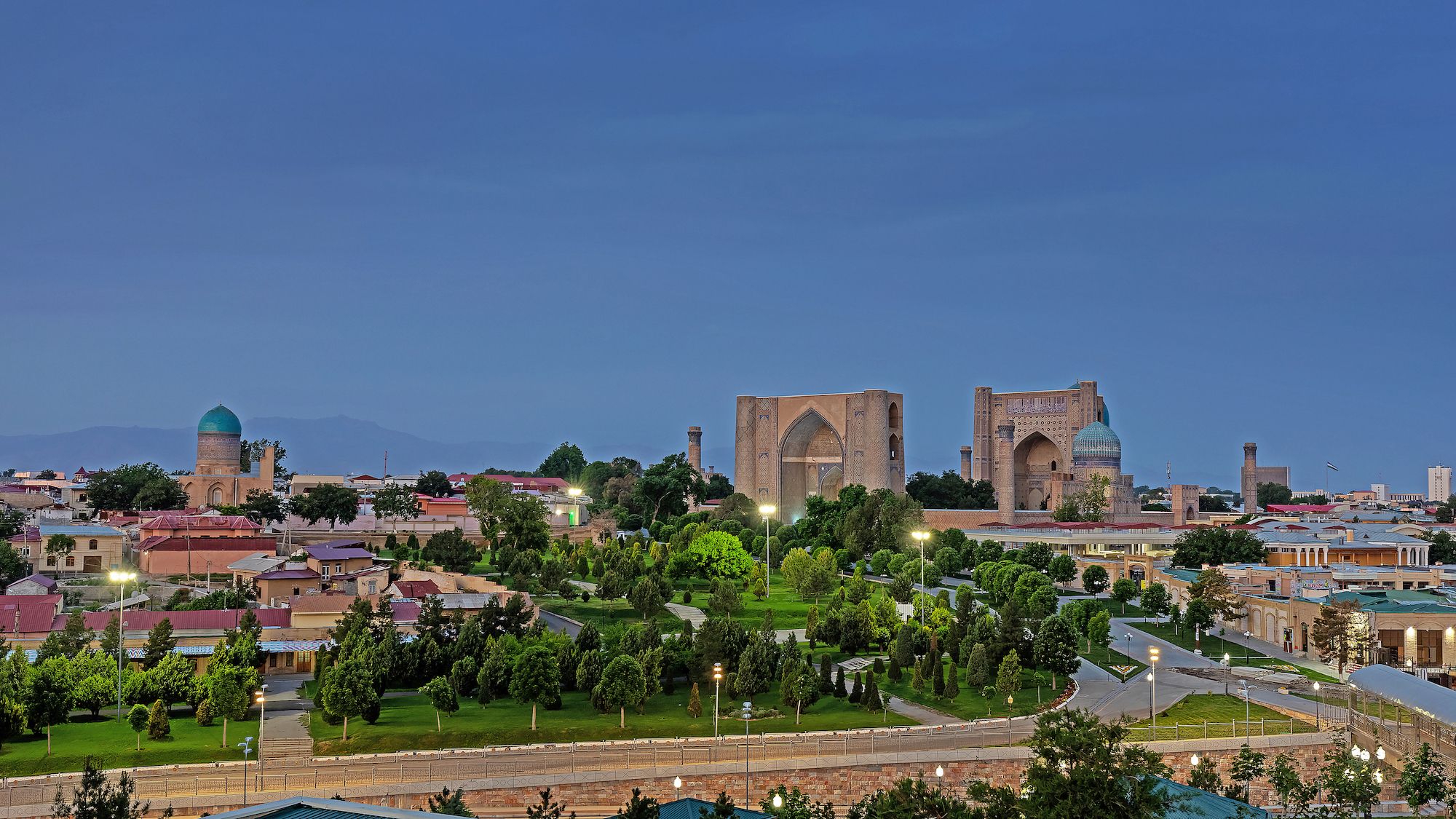Afterall, Timur had been one of the world’s greatest warriors, Uzbekistan’s very own Ghengis Khan, both feared and loved across the Medieval world. Opening his tomb during the middle of the Second World War felt auspicious. Two days after his headstone was removed from the Gur Emur mausoleum in Samarkand, the Nazis invaded Russia during Operation Barbarassa. Stalin, nervous and superstitious, ordered Timur’s remains to be reburied with full honours. A month later, the Nazis were defeated at the Battle of Stalingrad.
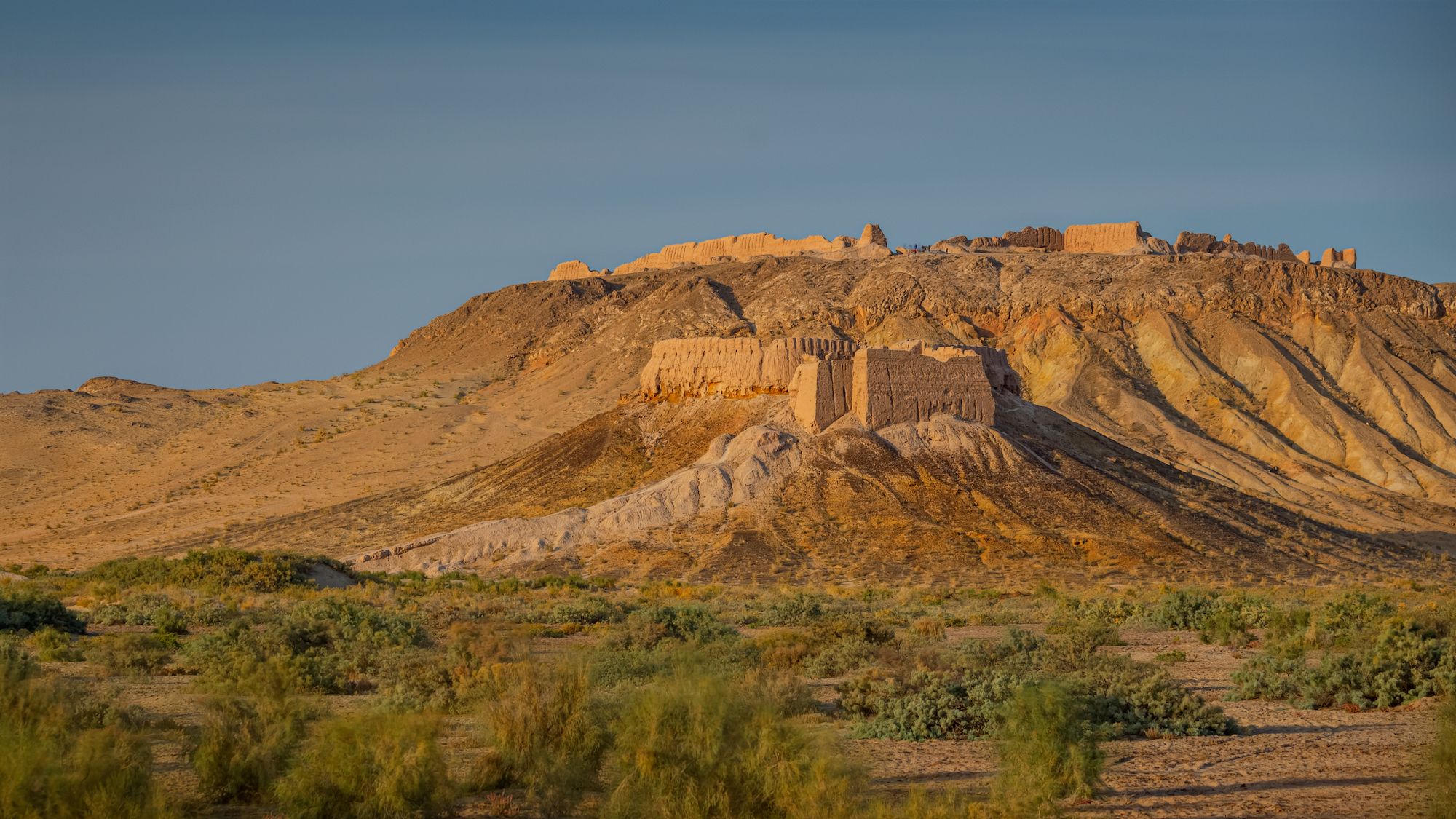 Ayaz Kala, archaeological site in Northern Uzbekistan
Ayaz Kala, archaeological site in Northern UzbekistanCulture
Today, looking up at the aquamarine-domed mausoleum on another of Uzbekistan’s impossibly sunny and bright days, you can see how the domed building would have intimidated locals and visitors. It rises above the fragrant walnut trees and in the strong sun provides sharp angles of welcome shade. Visitors no longer tremble if they wish to step inside. Instead, the interior shimmers with cooling blue and green tiles, and you’re immediately dwarfed by the sheer volume of space. It’s a fitting nod to the man who once rode his horse across Central Asia, conquering towns and uniting tribes. Although somewhat overshadowed in the West by the Italian Renaissance, the Timurid Empire spawned the Timurid Renaissance, where sciences and arts blossomed. Investment in arts and architecture and mathematics began under Timur’s rule, remnants of which can still be seen today across Central Asia.
Statues of these renaissance heroes dominate squares across the capital Tashkent and Samarkand’s streets. One, Mirzo Ulugbek, 15th century astronomer and mathematician, changed the way we view the stars thanks to his obsession with trying to improve telescopic accuracy. He built one of the world’s largest observatories – you can still see the foundations and understand the scale and importance of knowledge during the Timurid period.
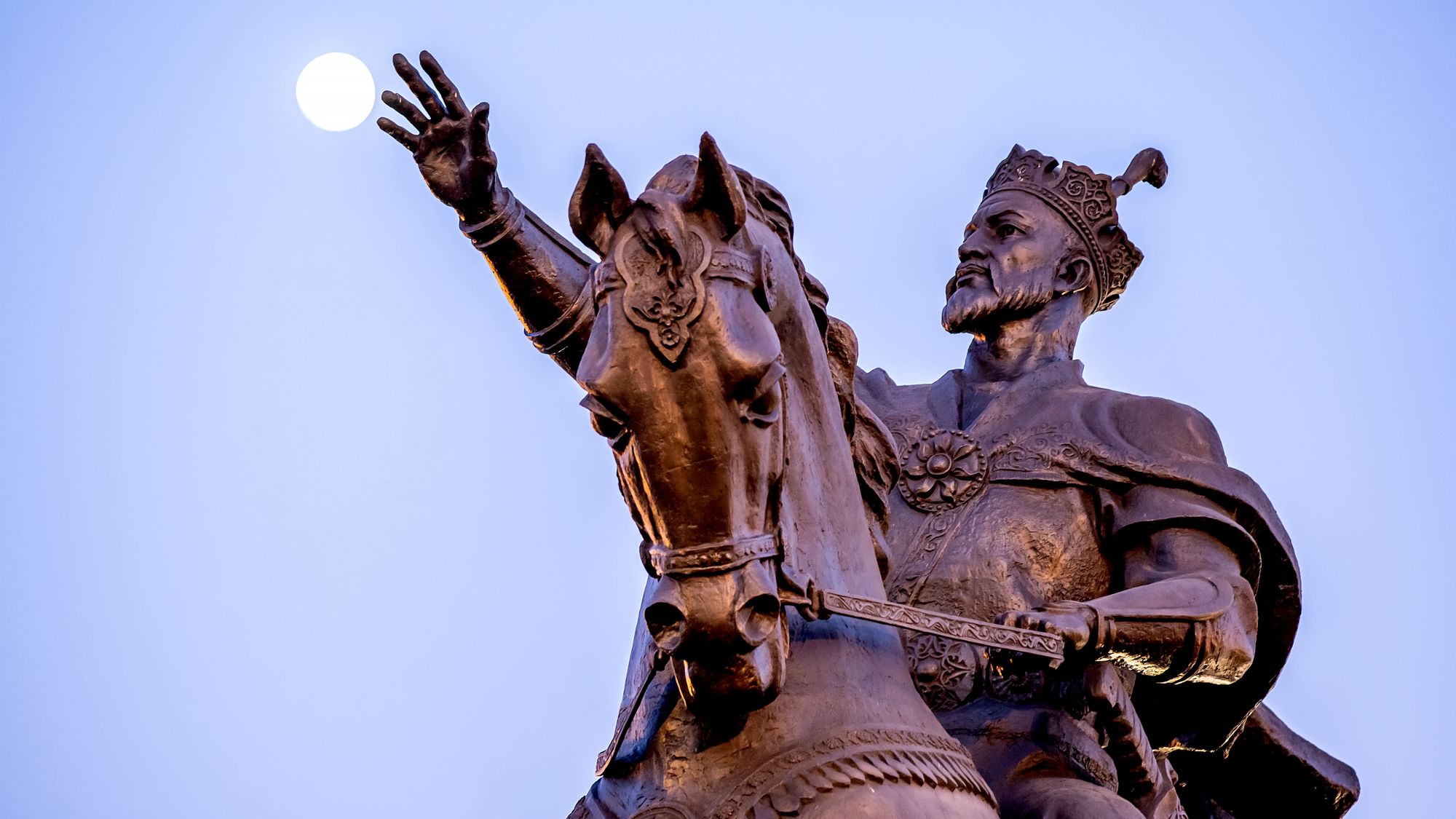 Amir Timur, the famous statesman and commander
Amir Timur, the famous statesman and commanderAt times, travelling through Uzbekistan, the country feels like a living museum. There are mausoleums and tombs built in vivid colours and decorated with extraordinary geometric patterns. Many have stood the test of time, standing firm in the hot desert winds, while others fell into decay but were rebuilt during the period of Soviet rule.
Samarkand is one of the jewels of Central Asia. Its name literally means ‘stone fort’, and walking around the solid, squat, square buildings, with their inner-courtyards and roof terraces, it feels like a city built with fortification in mind. Samarkand was one of the ancient trading capitals of the Silk Road, where caravans would rest and trade on the long journeys between Turkey in the West and China in the East. That influence can be seen in the architecture - with the minarets and domed roofs - but it’s most striking in the food.
Eat your heart out
Food is one of the country’s biggest draws. Dinners in Uzbekistan are always best taken under the stars, with dishes like aubergine salad and pomegranate, and the ubiquitous achichuk (tomato and onion salad) gracing every table – served to cut through the rich lamb shashlik and piles of plov.
Plov is Uzbekistan’s national dish - on paper, the dish is simply rice, carrot and meat. But it’s the hospitality that accompanies the plov, cooked in huge cauldrons called kazans and served at plov centres across cities and towns, that makes it special. Choose your plov, get a side salad, opt in for an egg or kazy (horse sausage) and sit at a large communal table to eat with locals. Laghman comes a close second – bowls of steaming thick noodles (a nod to Chinese traders) served in meat broth, with Bulgarian peppers, aubergine and potatoes.
If plov is ubiquitous then bread in Uzbekistan is sacred. Wheels of non-bread are sold on almost every corner – stretched dough baked in tandyr ovens. In the Fergana Valley bakers sell the bread smeared with smetana, or sour cream, a hangover from the Soviet Union. In Samarkand, it tends to be eaten hot from the oven, and torn by hand. It’s never cut with a knife or placed upside down – to do so would be disrespectful. Other street snacks include somsa – crisp, triangular pastries filled with hot pumpkin or lamb mince.
These make perfect snacks for exploring the Registan, the heart of the ancient city.

